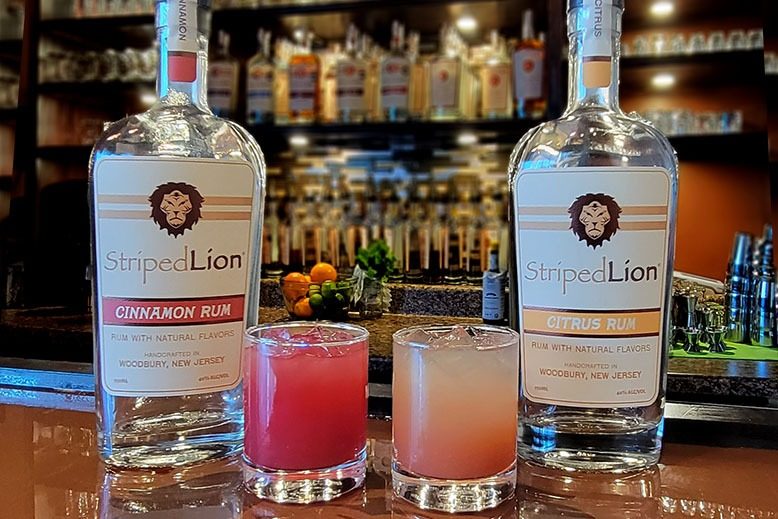
For whatever reason, rum tends to play second fiddle to other spirits. Drinks made with vodka, gin or whiskey populate every cocktail menu. But you’re more likely to find a concoction made with mezcal or amaro than one with a sugarcane spirit.
“Everyone is waiting for rum to have its day in the sun,” says Erin Wright, who owns Striped Lion Distilling in Woodbury with her husband, Kevin. Since its opening in 2020, the couple has focused exclusively on crafting distinctive rums. “There’s a lot of hurdles to overcome in terms of the populace’s concept of what rum can be,” she says.
Wright finds herself doing a good deal of educating consumers in tasting rooms and at festivals. First, she notes that rum can be made anywhere in the world, not just in the Caribbean. Wright explains that it’s made from sugarcane juice or sugarcane molasses (Striped Lion sources theirs from growers in Florida and Louisiana). These are fermented, then distilled.
The category is diverse: from light (clear) to aged, flavored and spiced. Her favorite part is showing guests how beautifully rum works in cocktails—from a classic daiquiri (rum, lime, sugar) to tiki drinks like the mai tai—and how well it works replacing other spirits in classics like the old fashioned.
Though the revival has been slow, over the last decade the number of rum-producing American craft distilleries has boomed, according to data compiled by the online magazine the Rum Reader. That has made a greater number of rums more visible on store shelves and in bars—and not just big brands like Bacardi and Captain Morgan. At New Jersey liquor stores, you’ll see elegant examples from Diplomático, Plantation Rum and Hampden Estate, bottles you wouldn’t have easily found five years ago.
“Owners of liquor stores, restaurants, bars and cocktail lounges,” Wright says, “have really been more open to using rum in a more diverse array of drinks. More people are open to hearing about rum and not just bourbon or gin.
“We really hope that, as we grow, we’ll have more products that will stimulate conversation around the diversity that is rum,” Wright says. “Ultimately, we want to help consumers really get their minds around all the different things rum can be. It really is a beautiful spirit.”
No one knows New Jersey like we do. Sign up for one of our free newsletters here. Want a print magazine mailed to you? Purchase an issue from our online store.



